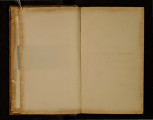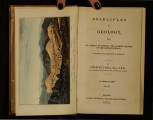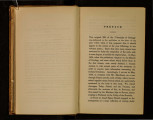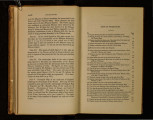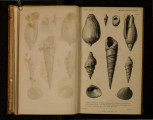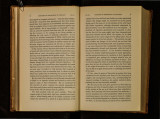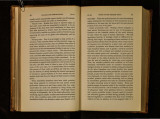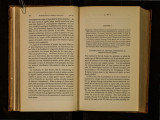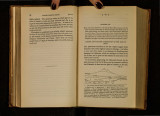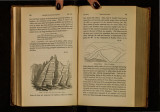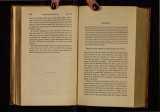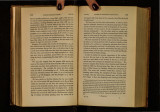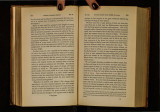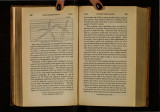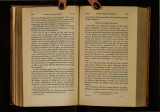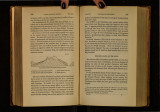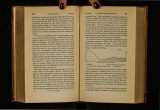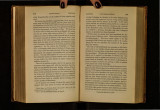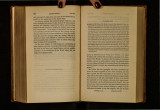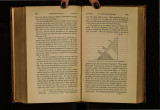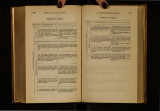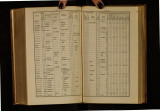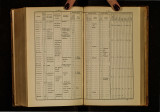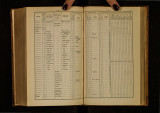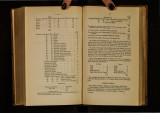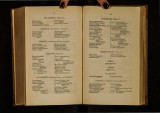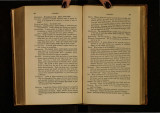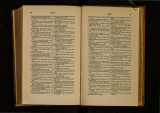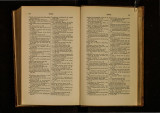| OCR Text |
Show 134 NEWER PLIOCENE PERIOD. [Ch.X. the globe will bring to light some of the most .striking exa~ples of marine strata upraised to great heights durmg comparatively modern periods. From the observations of Dr. Jack, it appears that in the island of Pu1o Nias, off the west coast of Sumatra, masses of corals of recent species can be traced from the level of the sea far into the interior, where they form considerable hills. Large shells of the Chama gigas ( Tridacna, Lamie) are scat~ tcred over the face of the country, just as they occur on the present reefs. These fossils are in such a state of preservation as to be collected by the inhabitants fot· the purpose of being cut into rings for the arms and wrists *. Madeira.-The island of Madeira is placed between the Azores and Canaries, in both of which groups there are active volcanos, and Madeira itself was violently shaken by earth~ quakes during the last century. It consists in great part of volcanic tuff's and porous lava, intersected in some places, as at the Brazen Head, by vertical dikes of compact lavat. Some of the marine fossil shells, procured by Mr. Bowdich from this island, are referrible to recent species. These examples may suffice for the present, and lead us to anticipate with confidence, that in almost all countries where changes of level have taken place in our own times, the geologist will find monuments of a prolonged series of convulsions during the Recent and newer Pliocene periods. Exceptions may no doubt occur where a particular line of coast is sinking down, yet even here we may presume, from what we know of the irregular action of the subterranean forces, that some cases of partial elevation will have been caused by occasional oscilla· tions of level, so that modern subaqueous formations will, here and there, have been brought up to view. We shaH conclude by enumerating a few exceptions to the rule above illustrated-instances of elevation where no great earthquakes have been recently experienced. * Geol. Trans., Second Series, vol. i. pal't ii. p. 397. t MS. of Captain B. Hull. Cb.X.J BORDERS OF TilE RED BEA. 135 Gro.fO!il, near Nice.-At a spot called Grosceil, near Nice, east of the Bay of Villefranche, in the peninsula of St. Hospice, a remarkable bed of fine sand occurs at an elevation of about 50 feet above the sea*. This sand rests on inclined secondary rocks, and is filled with the remains of marine species all identical with those now inhabiting the neighbouring sea. No less than 200 species of she11s, and several crustacea and echini have been obtained by M. Risso, in a high state of preserva: tion, although mingled with broken shells. The winds have blown up large heaps of similar sand to considerable heiO'hts 5 ' upon ledges of the steep coast farther westward, but the position of the deposit at Grosceil cannot be referred to such agency, for among the shells may be seen the large Murex Triton, Linn., and a species of Cassis, weighing a pound and a half. Uddevalla.-The ancient beaches of the Norwegian and Swedish coasts, described in the first volume t, in which the shells are of living speciea, present more marked exceptions as being farther removed from any line of recent convulsion. They afford evidence of a rise of 200 feet or more of parts of those coasts during the newer Pliocene, if not the Recent epoch. West of England.-The proofs lately brought to light of ana~ logous elevations on our western shores, in Caernarvonshire and Lancashire, during some modern tertiary period, were before pointed out :1: ; but the data are as yet exceedingly incomplete. Western Borders of the Red Sea.-Another exception may be alluded to, for which we are indebted to the researches of Mr. James Burton. On the western shores of the Arabian gulf, about half way between Suez and Kosire, in the 28th degree of North latitude, a formation of white limestone and calcareous sand is seen, reaching the height of 200 feet above the. sea. ~t is replete with fossil shells, all of recent species, which are m a beautiful state of preservation, many of them retaining their colour. I have been favoured with a list of * I examined thit> locality in company with Mr. Murchison iu 1828. t Chap. xiii. ~ See description of the map, vol. ii, |




